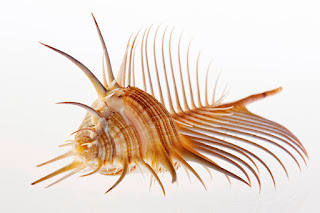HAWAII SHELLING BUCKET LIST!
- Puka shells (These are not shells but in fact pieces of cone shells. They are very common to find on Hawaii’s beaches and are recognized by their puka, or hole, in the middle. Puka shells are typically worn down pieces of a cone shell’s spire. Make a bracelet/necklace!)
- Conch (learn how to blow one)
- Sunrise shell (rare, found easiest at sunrise, possibly the most treasured shell of the Hawaiian seas. Originally worn only by Hawaiian royalty, the sunrise is a deep water scallop that boasts vibrant colors of yellows, oranges, and pinks, much like the colors of a sunrise. They are very rare and hard to find, which is why you’ll see a hefty price tag on them in stores. Although uncommon, it is not unheard of for sunrises to wash up on the north-facing shores of Oahu, Kauai, and Niihau.
- Sea Marbles

- Cones (These types of shells are shockingly detailed and bright, and for good reason. The creatures inside of cone shells have a very poisonous sting, so don’t immediately pick one up if you see it. The most common pattern of cone shells found in Hawaii is the black-and-white one, which has dark brown or black and white square designs
- Opihi/limpet (The name opihi actually refers to the creature that lives inside this shell, but the shell name is actually a limpet. Opihi clings to rocks much like mussels do in California and are gathered and eaten by local people in Hawaii. They are oval-shaped and look like flattened volcanoes since their center rises slightly and then craters. They can be anywhere from bright white in color to a deep black and usually blend into their surrounding. However, if you’re reef walking you will most likely spot them clinging to the rocks and protectively capping the creature beneath it. *checked off bucket list 5/8/21 Yokohama Bay/Ka'ena point. Very small and black.
- Cowries. Traditionally these shells were seen as fertility symbols by Hawaiians. They can vary in size and color. Cowrie names usually denote their patterns, and common ones found in Hawaii are the humpback cowrie, tiger cowrie, snakehead cowrie, checkered cowrie, honey cowrie, and lynx cowrie. If you remember the sugary cereal Smacks, then you will be able to visualize the shape of cowry shells. Also, these are incorrectly called puka shells quite often. *Checked off bucket list 5/8/21 Yokohama Bay/Ka'ena point. The shell was very matte, old-looking, and white. The mouth was full of some sort of clay or something. It was very high up on the shore, where the water doesn't reach. Found another the same day in a park next to Barbers Point, again not near the water. This one was also very old-looking, matte, and white with some red from the mud it was sitting in. I feel like maybe both were almost fossilized, as I haven't seen non-shiny ones before. I found a shiny, black cowrie a few days later on White Plains Beach, the back of the shell, hump, was missing. Still super pretty.
- Augers (long, skinny, and sharp, and somewhat resembles a screw or dagger. They have varied patterns and colors and live in the sand, but also are venomous like cone shells. Be careful if you spot one of these as there may still be a creature living inside. Beautiful and dainty, auger shells are relative to the cone shell and should thus be collected only with caution.)
These have proven extremely easy to find if you don't mind the small size, similar to a grain of rice. anything bigger I've yet to find.
- Kahelelani (Niihau) (extremely rare and valuable. Another bead for royalty, kahelelani’s were collected from the sand and strung to create thick lei necklaces for Hawaiian ali‘i. More commonly known as Niihau shells for the island in which they typically wash up, you can also find these teeny shells on Kauai, Molokai, and Lanai. They are miniature in size, about a quarter of the size of your pinky nail, and vary between browns, pinks, and reds in color. They are tedious to find and even more tedious to string, which is why they are so valuable in jewelry shops around Hawaii.)
- Shiva (Just as common as puka shells, the shiva shells are white and polished and scattered throughout all of Hawaii’s beaches. They are common to collect because there are easy to find and simple in their natural beauty. Shiva shells are the operculum, or little lid, of the shell that protects the creature’s soft body. Like all shells, these ones are tumbled in the waves and sand and worn down to about the size of a dime, have a spiral design to them, and are polished to a shine by the sea.)
- Sea Urchin Shell *Checked off bucket list 5/8/21 Yokohama Bay/Ka'ena point in one of the little tide pools up on the rocks at the start of high tide. Was very small, about the size of the end of my thumb. Went Snorkeling on 5/14 in Shark's Cove and found two, one slightly smaller than the first and then one that was so small, like a grain of rice. Bunch of pieces and chunks as well, but it has proven rare to find a whole one.
- Spider Drupe *Checked off bucket list 5/8/21 Yokohama Bay/Ka'ena point. Have found a few of these.
- Abalone
- Shark tooth
- Drift wood
- Starfish
- Coral (a sad one to find) *checked off bucket list 5/8/21 Yokohama Bay/Ka'ena point
- Venus comb
- Lava stone
- Hawaiian pink striped bubble shell hydatina amplustrr
- Sea beans also called drift seeds and drift fruits, are seeds and seed pods from tropical plants that float the world’s oceans for years before appearing onshore. They come in all shapes and sizes and make for an excellent beachcombing activity.
- Pearls




















No comments:
Post a Comment